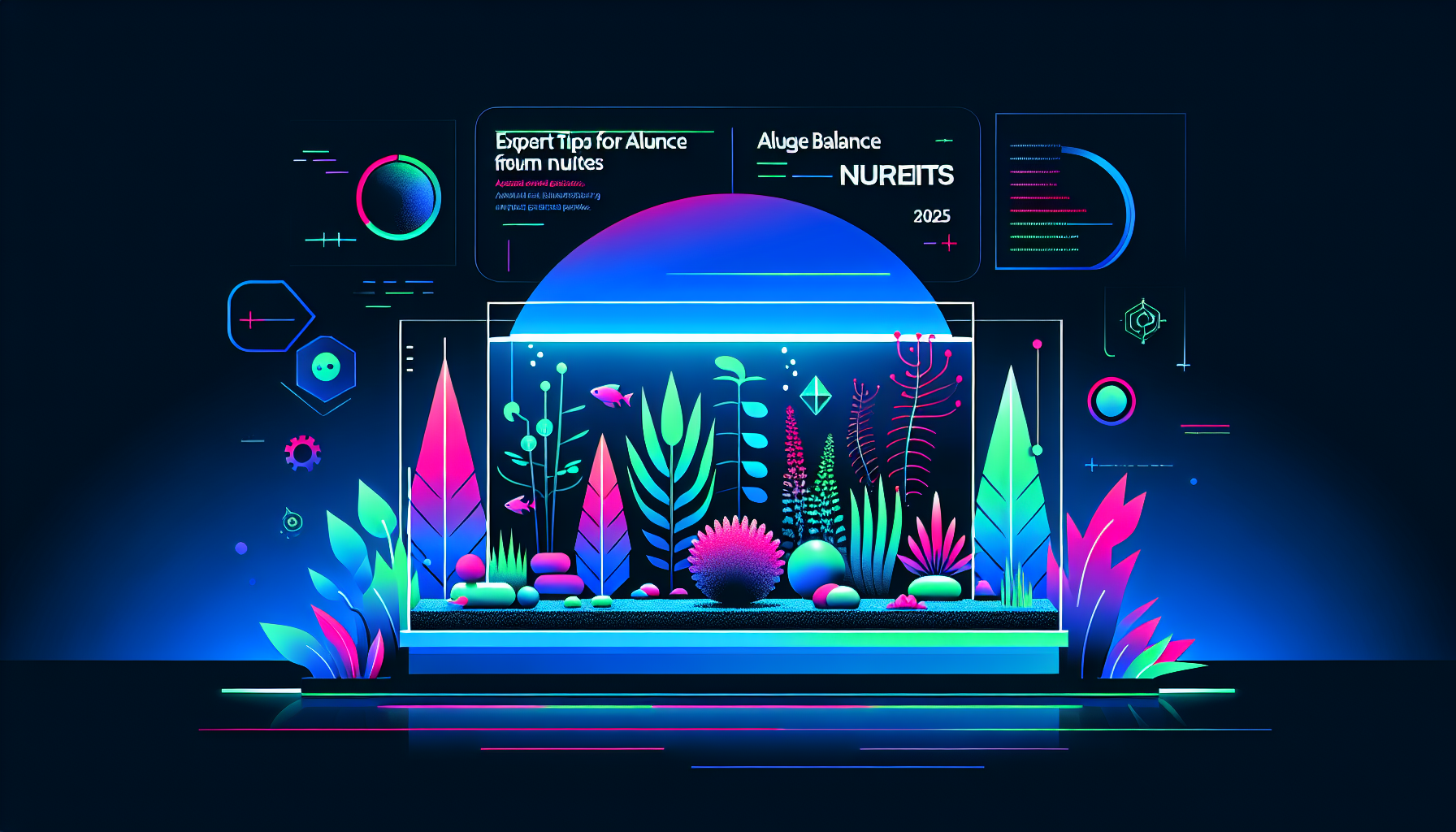Expert Tips for Algae Balance Nutrients in 2025
Maintaining a pristine aquascape in 2025 means mastering the delicate dance of algae control and nutrient balance. Whether you’re a beginner or seasoned aquascaping enthusiast, understanding how to keep algae growth in check while ensuring your aquatic plants thrive is key to a stunning aquarium. Here are the latest expert tips to achieve that perfect balance.
Understanding the Algae-Nutrient Relationship
In every planted aquarium, algae and plants compete for nutrients such as nitrates, phosphates, and trace elements. When this balance is disturbed—often due to excess nutrients, inconsistent CO2 dosing, or improper lighting—algae can quickly overtake your aquascape. Experts agree that prevention through proper balance is more effective than battling algae blooms after they appear.
Essential Nutrients for Healthy Aquascapes
Nutrient management is the backbone of successful aquascaping. Here’s what you need to know about the key nutrients and how they affect algae and plants:
- Macronutrients: Nitrogen, phosphorus, and potassium are vital for plant growth. Lack of these can favor algae instead.
- Micronutrients: Iron, magnesium, zinc, and other trace elements support robust plant health.
- CO2: Carbon dioxide supplementation enhances plant growth and helps outcompete algae.
For an in-depth guide on essential aquascape nutrients, visit our dedicated resource.
Expert Algae Control Strategies for 2025
Below are the latest, proven methods experts use to maintain an algae-free aquarium while balancing nutrients:
1. Implement Consistent Water Changes
Regular water changes (20-30% weekly) help dilute accumulated nutrients and waste, reducing the risk of algae outbreaks. This simple habit also removes excess organics and refreshes trace element levels.
2. Optimize Fertilizer Dosing
Use high-quality, aquarium-specific fertilizers, and dose according to plant biomass and growth rate. In 2025, automated dosing systems and app-controlled dispensers allow precise, scheduled nutrient delivery, preventing nutrient spikes that fuel algae blooms.
3. Master Your Lighting Setup
Light is a major driver of algae growth. Opt for adjustable LED fixtures and set a photo period of 6-8 hours per day. Consider using a timer for consistency. Position your aquarium away from direct sunlight to avoid uncontrolled algae-promoting light exposure.
4. Fine-Tune CO2 Injection
Steady CO2 levels (20-30 ppm) boost plant metabolism and outcompete algae for nutrients. Use a reliable CO2 drop checker and regulator to maintain consistent levels. Regularly inspect for leaks or irregularities.
5. Introduce Algae-Eating Species
Including algae-eaters such as Amano shrimp, nerite snails, and otocinclus catfish supports natural algae management. Choose species that suit your tank’s conditions and bioload.
6. Maintain Filtration and Flow
Proper filtration collects debris and disperses nutrients efficiently, while good water movement prevents dead spots where algae can thrive. Clean filter media regularly to prevent nutrient buildup and encourage healthy bacteria colonies.
7. Test and Track Water Parameters
Regular testing for nitrate, phosphate, and other key parameters is essential for nutrient control. Tracking trends over time helps you adjust dosing and water changes proactively to avoid algae-triggering imbalances.
Advanced Nutrient Balancing Techniques
Eager to take your aquascaping skills to the next level? Consider these advanced techniques for optimum algae-nutrient balance:
- Targeted Nutrient Dosing: Customize fertilizers for specific plant needs to avoid over-supplementing unwanted nutrients.
- Dry Start Method: Establish healthy plant growth before flooding the tank, reducing initial algae risk. Read our step-by-step dry start guide for more information.
- Biological Filtration: Encourage robust bacterial colonies to process excess nutrients before algae can exploit them.
- Integrated Aquascape Care: Combine mechanical, chemical, and biological controls for a comprehensive algae prevention strategy.
Common Algae Types and How to Manage Them
Identifying your algae species can help you tailor your approach. Common varieties include:
- Green Spot Algae: Often a sign of phosphate limitation—test and adjust as needed.
- Black Beard Algae: Linked to fluctuating CO2 and low flow; stabilize CO2 and increase circulation.
- Hair Algae: Usually caused by excess nutrients and light; cut back and remove manually.
Learn more in our comprehensive algae treatment guide.
Final Thoughts: Achieving Long-Term Algae Balance in 2025
Balancing nutrients while preventing algae is an ongoing journey. By implementing these expert tips tailored for 2025, you’ll enjoy a vibrant, healthy aquascape that’s as beautiful as it is sustainable. Remember, patience and observation are your best tools as you fine-tune your aquarium’s ecosystem.
Ready to Take Your Aquascaping to the Next Level?
If you found these tips useful, explore our free aquascaping guides for more expert knowledge. Join our community, share your challenges, and let us know your favorite strategies for algae control and nutrient balancing!



